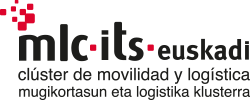Home / News / Cluster News / “Tolling evolution in Portugal” completa la visión internacional sobre tarificación viaria
“Tolling evolution in Portugal” completa la visión internacional sobre tarificación viaria
*|gallery|*
*|sumario|*
La sesión plenaria del III Congreso ITS Euskadi se completa con la intervención de António Amador, head of ITS Development en la empresa portuguesa Brisa. Amador exponía que el nivel de confort del conductor en vías de pago se mide en función del número de paradas que debe realizar para completar su abono. Y en un país con un perímetro fronterizo tan amplio, una vez respondida la demanda interna, con un 80% de sus peajes automatizados, la solución para la gestión del tráfico transfronterizo está siendo la implantación de pruebas piloto para definir el sistema óptimo.
:: Video
:: Summarize of the presentation
Tolling in Portugal started roughly forty years ago. Initially with open solutions but with the increase of build kilometres, the closed system spread all over the network and also, as different concessions were connected each other, interoperability was introduced, so driver’s comfort was achieved since the number of times the driver must stop in a journey is minimised.
Twenty years ago, electronic fee collection (EFC) was introduced at the beginning only in open tolling but few years later it was extended to closed systems. Today the number of EFC users is roughly about 2 million.
In recent years, in order to be in accordance with European standards (DSRC 5.8GHz, EN15509) a technology migration was accomplished, nowadays in Portugal we can read with the same antenna the old Low Data Rate OBU’s and also the new Medium Data Rate ones.
Another important aspect is that in the traditional concessions it is mandatory to accept cash as a way of payment, so Brisa decided to introduce automatic cash machines. Today the majority of toll plazas have no toll keeper, and others are only manned during the rush hours. In Brisa, today, more than 80% of the transactions don’t have human intervention.
This was accomplished always with one thought in mind, technology independence, which means that in Brisa Tolling systems, it is possible to use equipment from different suppliers, so we can always look for the best equipment for the less price.
For concessions that appeared in the last years and those that started operating free of charge, the option was to use cashless systems in an open schema, the driver pay as it passes in each subsection. For people that don’t have an OBU, it can pay later, in any post office spread all over the country.
An issue that is now been addressed is the foreign drivers, some pilots are running regarding interoperability between Spanish drivers and also with self-machines that dispense OBU’s to foreigners.
:: Paper
